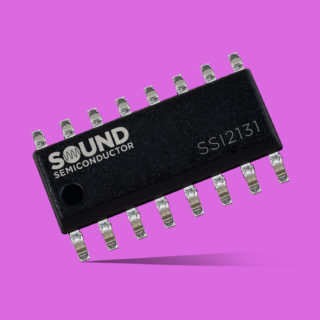 Sound Semiconductor – a manufacturer of custom integrated circuits for audio and music gear – has announced an addition to its family of Voltage Controlled Oscillator (“VCO”) integrated circuits.
Sound Semiconductor – a manufacturer of custom integrated circuits for audio and music gear – has announced an addition to its family of Voltage Controlled Oscillator (“VCO”) integrated circuits.
The new SSI2131 offers basic VCO functionality, with buffered triangle, sawtooth, and variable-width pulse outputs.
Offered in a 16-pin small-outline DIP package, only a handful of external components are necessary to create a VCO. Exponential setup is accomplished by use of fixed-value resistors for less demanding applications, and manual or CPU calibrated for exponential conformance to one cent over a ten-octave range. Both soft and hard sync are available.
Here’s what they have to say about it:
“Like the previously introduced SSI2130 VCO, special care was taken to provide unprecedented levels of temperature stability, exponentiality, and waveform integrity but in this case the on-chip mixer, sine shaper, and through-zero components were omitted.
The result is a modern, high-performance basic VCO that is extremely easy to use.”
“Ever since building my first synthesizer in college I’ve been imagining this VCO project,” stated Derek Bowers, designer of the SSI2130 and SSI2131. “I’m really happy with results of these developments.”
Pricing and Availability
Pricing is $1.40 at 1k pieces, with samples available now to qualified OEM’s. Production stock will be available by late February; at that time hobby and DIY enthusiasts will be served through Sound Semiconductor’s growing network of authorized resellers.

People should be excited by the SSI chip family. They’re affordable, well designed and come with excellent documentation.
I just ran through the datasheet. This is a simplified version of the 2130 that seems targeted at cost-reduced instruments. It’s about as simple as a VCO can get. That said, the 2131 has some extremely useful features like cv-controlled waveform mixing that are extremely attractive.
I’ve been following SSI’s output with great excitement. I lack the skillz to design anything myself around these IC’s, but the potential seems huge in theory. Have they been used in commercial products thus far? Any examples of DIY usage? Really curious how well they sound.